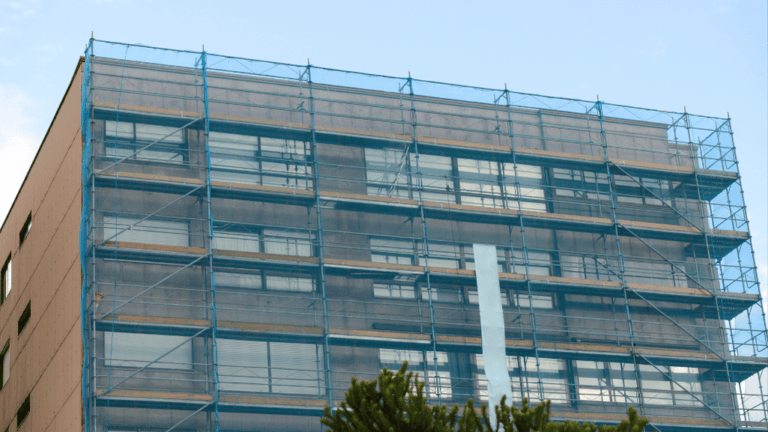Phone:
(+65)8319-0742
The academic landscape is perpetually evolving, with Constructivist Teaching Methods steadily gaining ground as a transformative force in contemporary classrooms. These methods, which are at the heart of an active learning approach, cater to a more engaged and dynamic educational experience. They elevate traditional pedagogy into a realm where inquiry-based learning, scaffolding techniques, and experiential learning are the principal drivers of student development.
At the core of constructivist practices is the belief that learning transpires best when pupils actively participate in their educational journey, constructing knowledge and skills through a series of insightful experiences and reflections. This paradigm shift from passive reception to active discovery fosters a more profound understanding of subjects, forging a learning environment ripe with exploration and enthusiasm.
Key Takeaways
- Constructivist Teaching Methods encourage a shift from passive learning to active engagement.
- Inquiry-based learning places students at the center of their educational experience.
- Scaffolding techniques enable personalized learning paths, building upon students’ prior knowledge.
- Experiential learning reinforces concepts through real-world application, ensuring deeper understanding.
- An active learning approach fosters critical thinking and problem-solving skills.
- Constructivist classrooms support collaborative activities that prepare students for future challenges.
The Philosophy Behind Constructivist Teaching Methods
The essence of constructivist teaching lies in fostering a student-centered learning environment that values the unique past experiences of each learner as a fundamental component for new knowledge acquisition. Through this philosophy, a classroom transcends traditional learning paradigms, embracing a flexible space where active participation and critical reflection are key drivers of the educational journey.
Connecting Past Experiences with New Learning
Constructivist teaching methods champion the belief that learning is most meaningful when it links new concepts to learners’ prior knowledge. This approach encourages a hands-on learning style where students can experiment, explore, and discover, thereby cementing new information within their existing knowledge framework. Such a symbiosis between old and new cements a stronger and more personal understanding of the subject matter.
Encouraging Active Participation and Reflection
Active participation is at the heart of the constructivist philosophy. This approach incentivizes learners to engage deeply with the material through activities like group discussions, projects, and problem-solving sessions, promoting a rich collaborative learning experience. By reflecting on their learning process, students sharpen critical thinking skills and become more invested in their educational journey.
Facilitating Knowledge Construction Instead of Delivery
In the realm of constructivist methodology, the role of the instructor evolves from that of a traditional teacher to a teacher facilitator who guides, supports, and assists students in their learning. This paradigm shift focuses on the construction of knowledge as a shared effort between teacher and student, wherein the facilitator creates an environment that encourages exploration and creation rather than passive reception of facts.
Each element of constructivist teaching methods interweaves to form an educational experience that respects individual learning styles, encourages active engagement, and supports the collective construction of knowledge. This philosophy does not simply fill a student’s mind with facts but, instead, equips them with the cognitive tools to weave their tapestry of understanding, making learning a personal and transformative experience.
Contrasting Traditional and Constructivist Approaches

When examining the landscape of educational methodologies, the dichotomy between traditional teaching methods and the constructivist approach becomes apparent. Traditional education often hinges on direct instruction centered around memorization and repetitive practice. However, a paradigm shift occurs within the constructivist realm, where the active learning approach redefines the role of learners and educators alike.
The role of teachers in traditional classrooms tends towards dissemination of knowledge, expecting students to absorb information passively. In contrast, constructivist teachers employ scaffolding techniques, promoting a more engaged and interactive learning experience. This adjustment in teacher-student dynamics fosters an environment rich in experiential learning, where knowledge is not simply transmitted, but actively constructed through personal and collaborative endeavors.
Evaluating the operational differences further, the focus shifts to assessment methods. Traditional assessments are usually restricted to standardized tests, relying on individual memorization and the regurgitation of facts. Constructivist assessments, however, approach learning as a holistic process, incorporating various forms of evaluation such as peer feedback, project-based tasks, and reflective dialoguesâeach enriching the learning experience with substance and context.
| Aspect | Traditional Approach | Constructivist Approach |
|---|---|---|
| Learning Focus | Basic skills, repetition | Exploration, curiosity-driven |
| Teacher’s Role | Knowledge dispenser | Facilitator, guide |
| Student Dynamics | Individual work, correct answers prioritized | Collaborative work, understanding prioritized |
| Assessment | Standardized tests | Observations, discussions, student work |
The dichotomy between traditional and constructivist teaching methodologies presents a compelling narrative of education’s evolution. It highlights an instructional transitionâfrom a passive reception of predetermined knowledge to a dynamic and active learning approach characterized by critical thinking, exploration, and authentic experiences.
Constructivist Teaching Methods in Practice

Delving into the world of education reveals that constructivist teaching methods vastly enrich the learning landscape by emphasizing student-centered learning. Highlighting the active roles that both educators and learners play, these practices pivot away from rote memorization and toward experiences that are engaging and relevant to real-world contexts.
Inquiry-Based Learning (IBL)
In the heart of inquiry-based instruction lies the essence of curiosity and analysis. Here, students are encouraged to develop questions that drive their exploration, leading to hands-on learning experiences. As they research and investigate, they construct knowledge by linking the new and the known, solidifying their understanding through active engagement.
Problem-Based Learning (PBL)
Problem-Based Learning is a natural progression from IBL that zeroes in on solving authentic, complex problems. This approach fosters collaborative learning, requiring learners to work together to devise innovative solutions. PBL not only strengthens knowledge acquisition but also equips students with skills that transcend the classroom.
Cooperative Learning and Collaboration
Cooperative learning exemplifies educational synergy. By working in groups, students depend on one another to achieve common goals, creating an environment fertile for the exchange of ideas. This collaboration cultivates a learning community that’s reflective of the interconnected world around us.
| Approach | Key Characteristics | Benefits |
|---|---|---|
| Inquiry-Based Learning | Posing questions, hands-on experiments, individual research | Develops critical thinking, fosters independence |
| Problem-Based Learning | Real-world problems, collaborative solution-finding, interdisciplinary | Enhances problem-solving skills, promotes teamwork |
| Cooperative Learning | Group assignments, shared responsibilities, peer-to-peer interaction | Encourages communication, builds social skills |
Whether it’s through the rigors of inquiry, the challenges of problem-solving, or the dynamics of team work, constructivist teaching methods continue to revolutionize learning. By embracing these student-centered methodologies, educators set the stage for a generation of learners that are not only knowledgeable but truly skilled and adaptable.
Key Components of a Constructivist Classroom
In a world where education is ever-evolving, the constructivist classroom stands out as a beacon of progressive learning, distinct in its promotion of student autonomy through inquiry and critical thinking. This approach transcends the traditional lecture-based model, fostering an environment where learners actively construct their own understanding. To navigate such a dynamic educational landscape, educators and students alike rely on specific pedagogical elements.
Eliciting Prior Knowledge and Creating Cognitive Dissonance
At the core of constructivist pedagogy is the effort to elicit students’ prior knowledge, allowing educators to connect new concepts with students’ previous experiences. This connective process not only enhances comprehension but also cements new information more securely in learners’ minds. By introducing complex challenges, educators create cognitive dissonance, propelling students to seek resolution through critical thinking and reflection, thereby recalibrating their existing knowledge structures in light of new insights.
Adapting Teacher Facilitation to Promote Student Autonomy
Integral to the constructivist doctrine is fostering student autonomy, a task requiring that teachers pivot from traditional didactic methods to a more facilitative role. Employing scaffolding techniques, educators provide the necessary support to encourage learners to delve deeper into subjects, make connections, and progress toward independence. This strategic guidance is designed to gradually diminish as students become more adept, capable of traversing the academic terrain with less assistance.
Assessment Through Reflective and Interactive Practices
Assessment within a constructivist framework looks beyond rote memorization to engage students in reflective and interactive assessment practices. These strategies include presentations, reflective writing, and structured dialogues, all of which prioritize the importance of the learning journey over quick-recall answers. Such assessments provide a richer, multifaceted view of learning, acknowledging its fluid nature and the unique contributions of each student.
FAQ
What Are Constructivist Teaching Methods?
Constructivist teaching methods are educational approaches that emphasize the active role of learners in constructing their own knowledge and understanding. Through an active learning approach, inquiry-based learning, hands-on experiences, and scaffolding techniques, students are engaged in learning activities that promote critical thinking and personal reflection.
How Does Constructivism Relate to Student-Centered Learning?
Constructivism is at the core of student-centered learning because it focuses on enabling students to shape their educational experiences. It involves hands-on learning, collaborative learning, and teacher facilitation to create environments where students are responsible for their own learning and deeply involved in the process.
How Do Teachers Implement Constructivist Methods in the Classroom?
Teachers implement constructivist methods by acting as facilitators rather than just knowledge providers. They may use inquiry-based instruction, scaffold students’ learning experiences, leverage experiential learning opportunities, and create environments conducive to collaborative learning, where students work together and support each other’s learning journeys.
What Distinguishes Constructivist Classrooms from Traditional Classrooms?
Constructivist classrooms are characterized by their focus on big ideas, the pursuit of student curiosity, and dialogues that foster knowledge construction rather than simply dispensing facts. They assess learning in multiple, reflective ways and prioritize group work and collaboration over individual tasks and rote memorization. This contrasts with traditional classrooms that often emphasize direct instruction, repetition, and individual success based solely on correct answers.
Can You Give Examples of Constructivist Activities?
Examples of constructivist activities include Inquiry-Based Learning (IBL) projects where students pose and investigate questions, Problem-Based Learning (PBL) tasks that involve solving real-world problems in groups, and Cooperative Learning exercises that require students to work together to achieve common goals and learn from one another.
What is the Role of a Teacher in a Constructivist Classroom?
In a constructivist classroom, the teacher’s role shifts from being a sole authority figure dispensing knowledge to becoming a facilitator who guides, supports, and provides rich experiences for students to interact with. Teachers use scaffolding techniques to help students reach higher levels of thinking and understanding while promoting student autonomy in the learning process.
How is Success Measured in a Constructivist Classroom?
Success in a constructivist classroom is measured through a combination of methods, including traditional tests, as well as assessments focused on students’ processes and developments, such as observations, discussions, presentations, and reflexive papers. Success is not just about getting the right answer, but also involves reflecting on learning, applying knowledge in real-world contexts, and the ability to work constructively in teams.
What are the Key Components of a Constructivist Classroom?
The key components of a constructivist classroom include eliciting students’ prior knowledge to connect new learning, creating cognitive dissonance to challenge existing beliefs, adapting teacher facilitation to support autonomy, and assessing learning through reflective and interactive practices. This environment fosters a deep, meaningful learning experience that is personalized and student-centered.

















